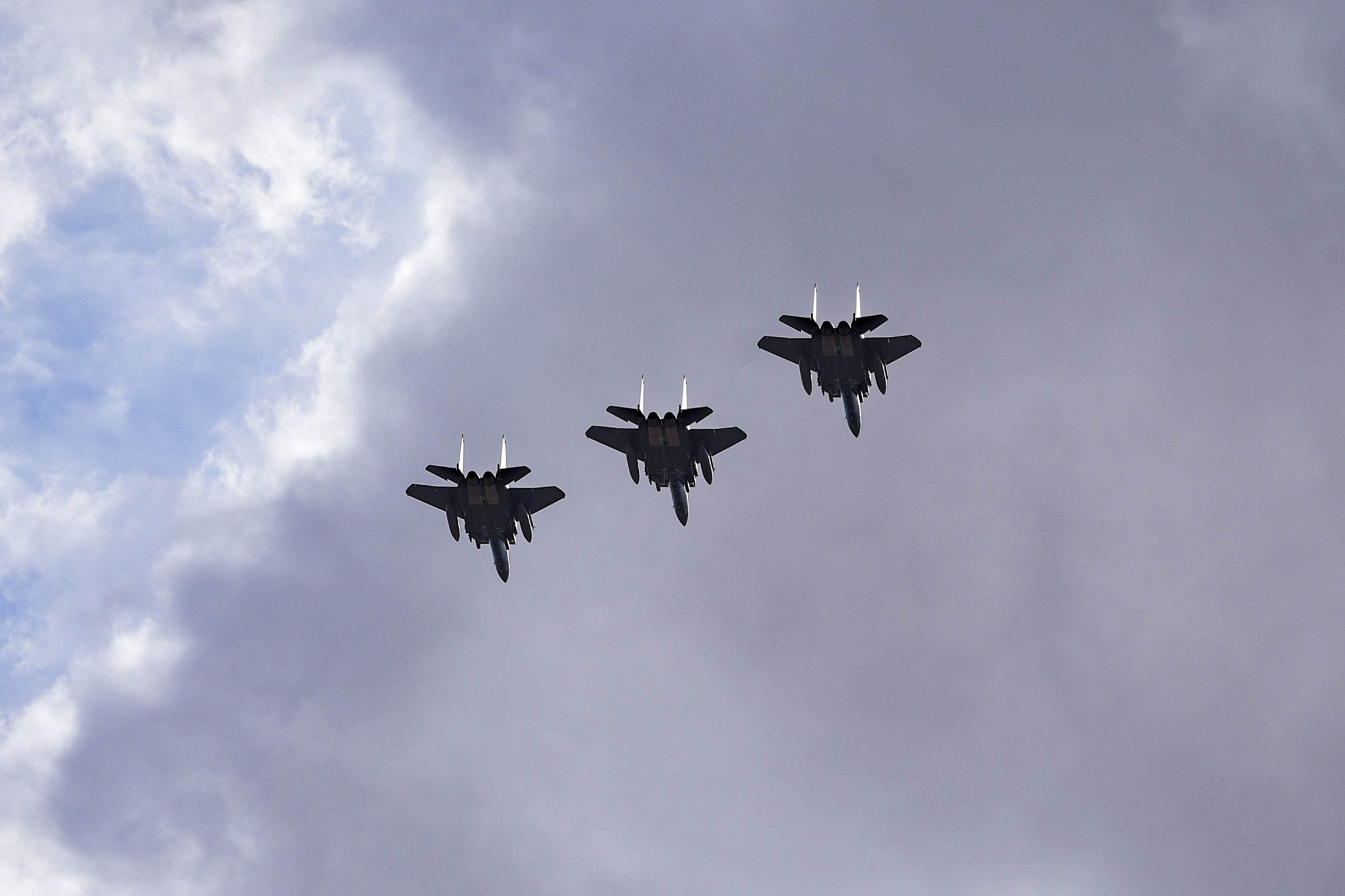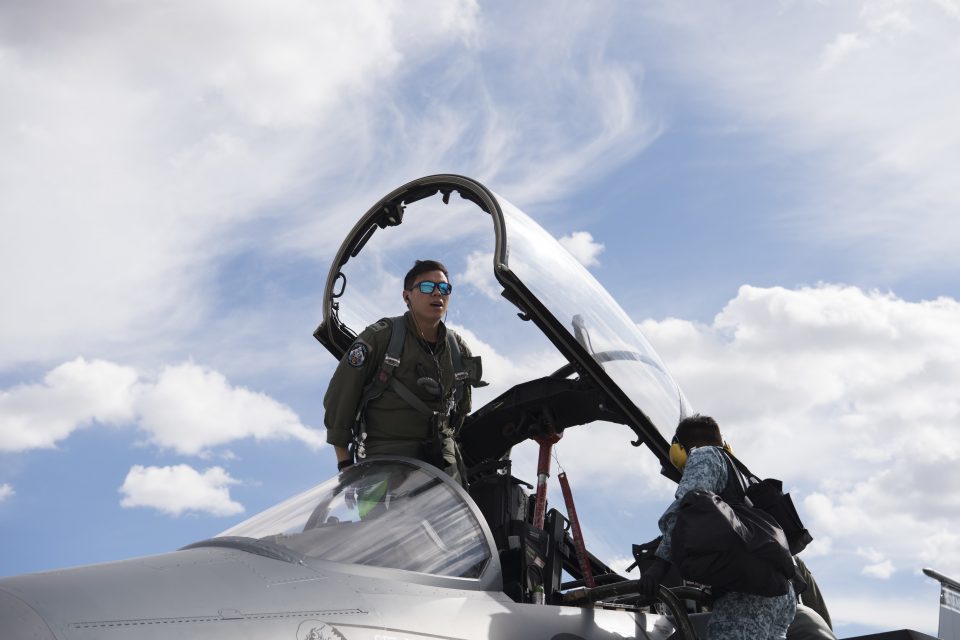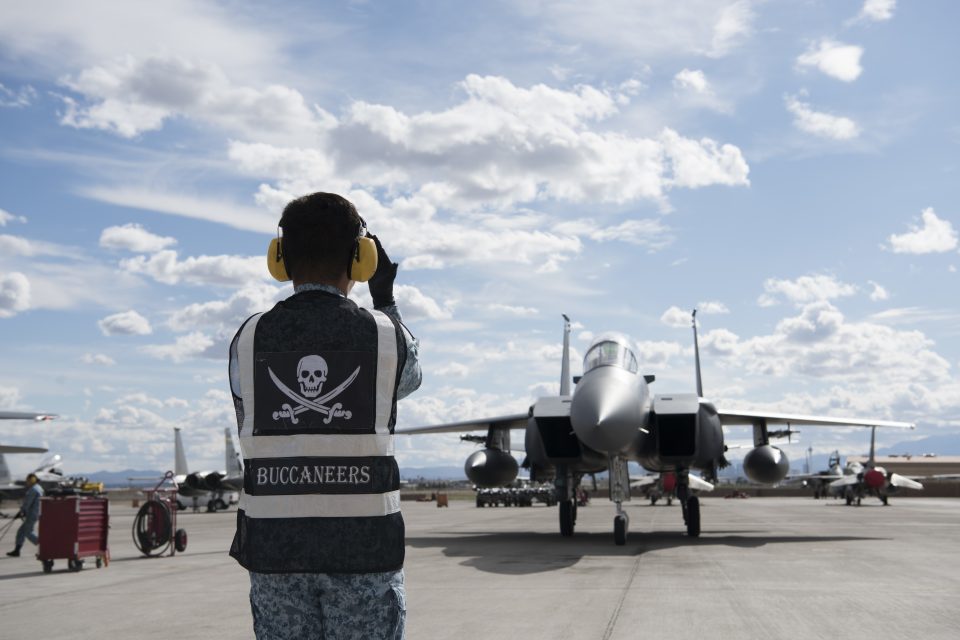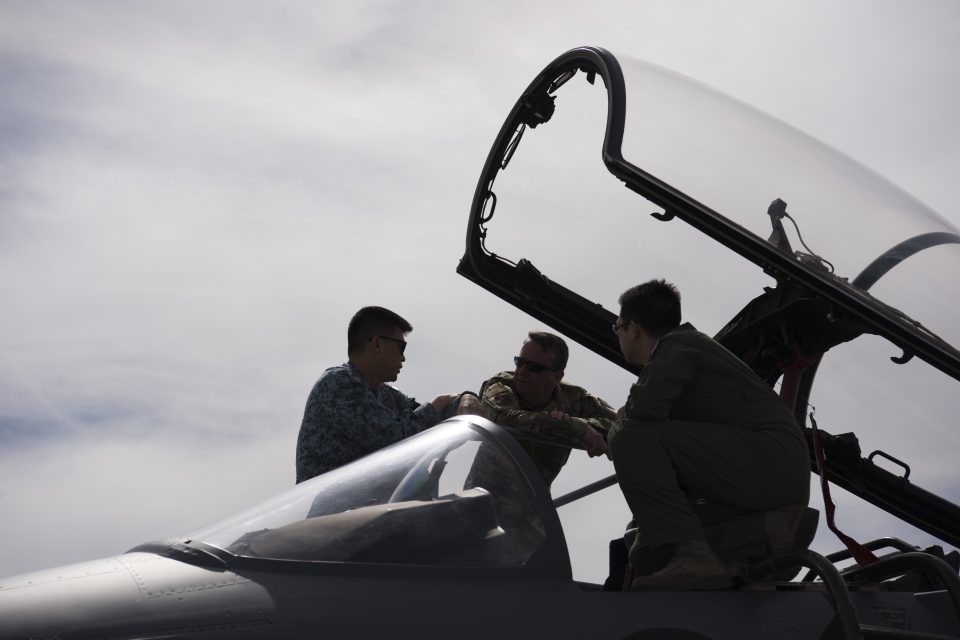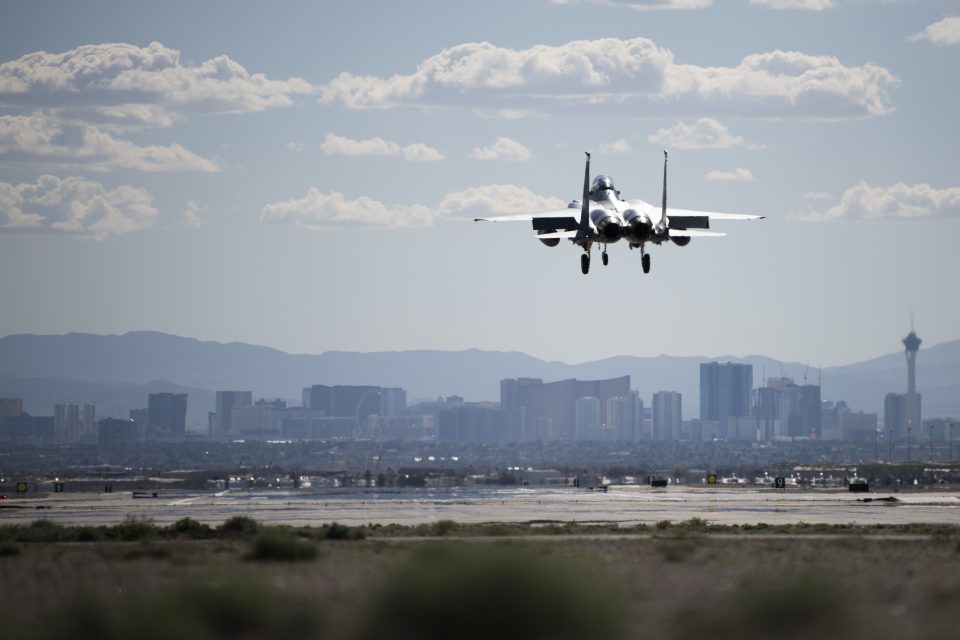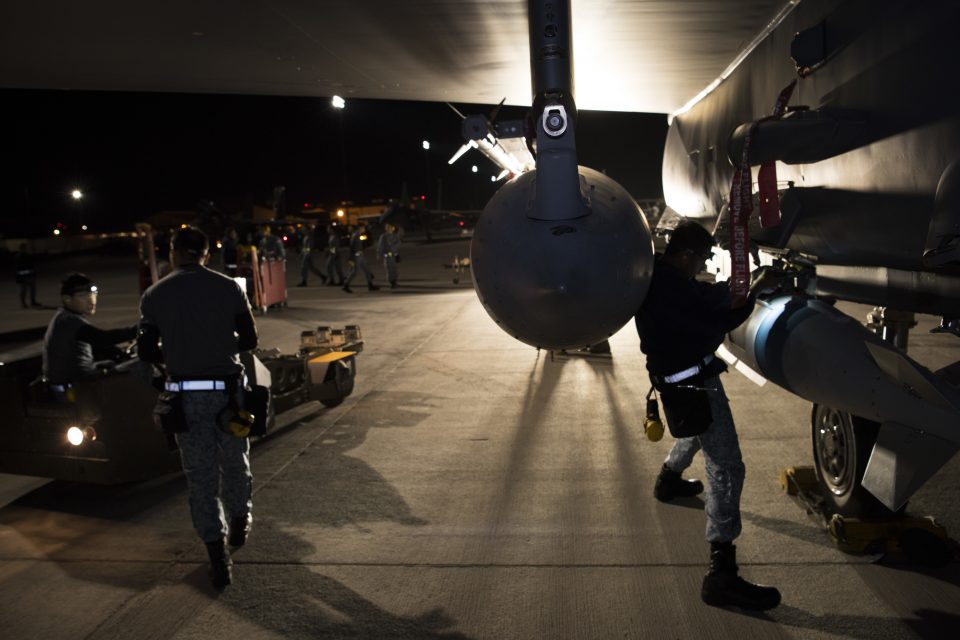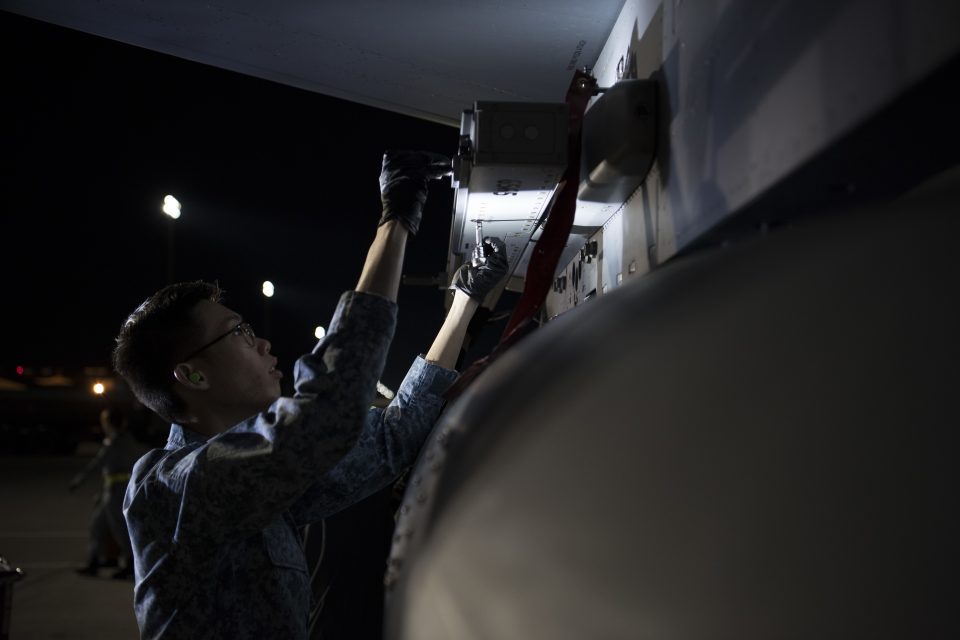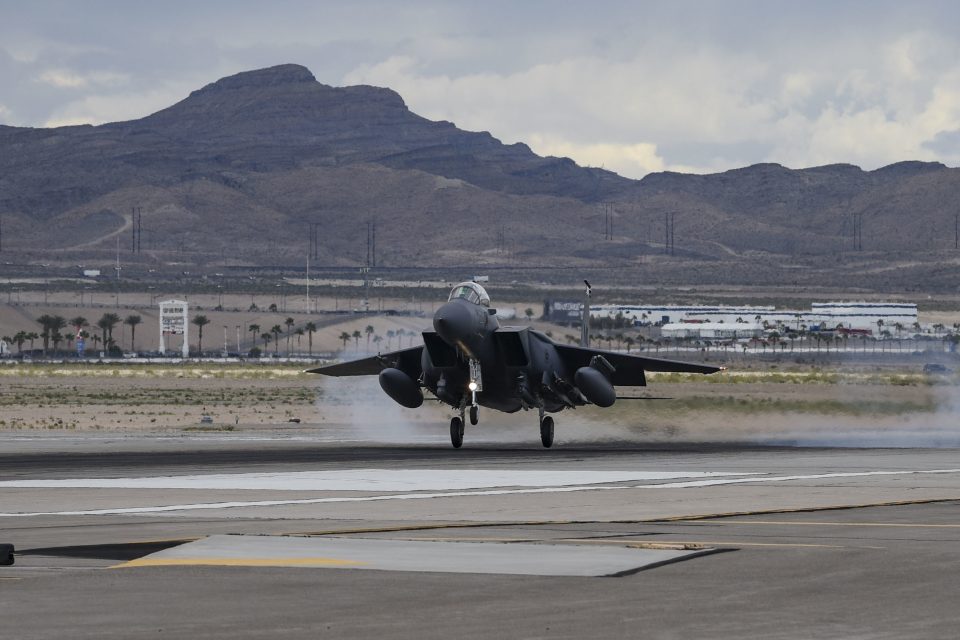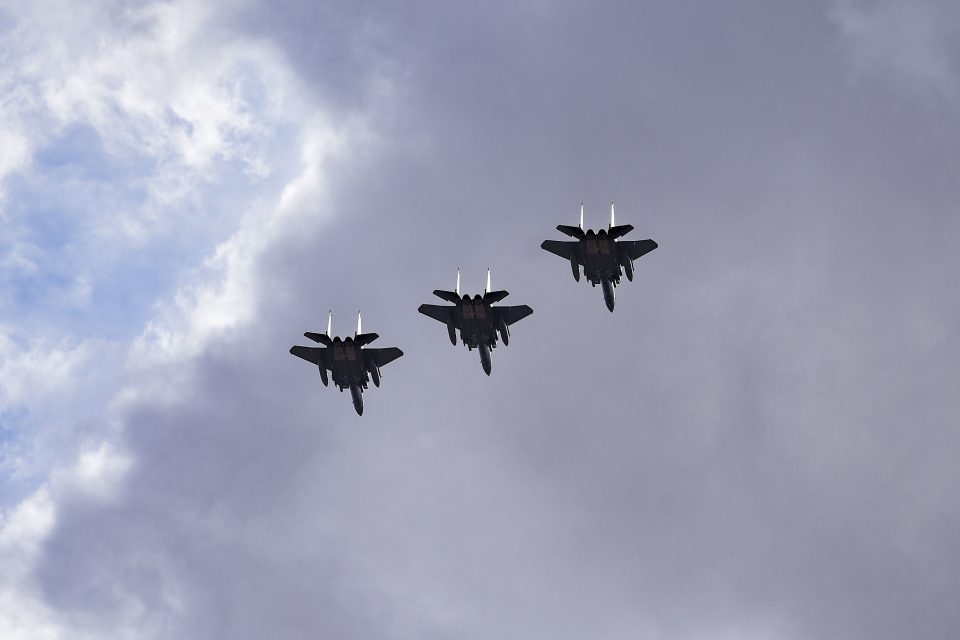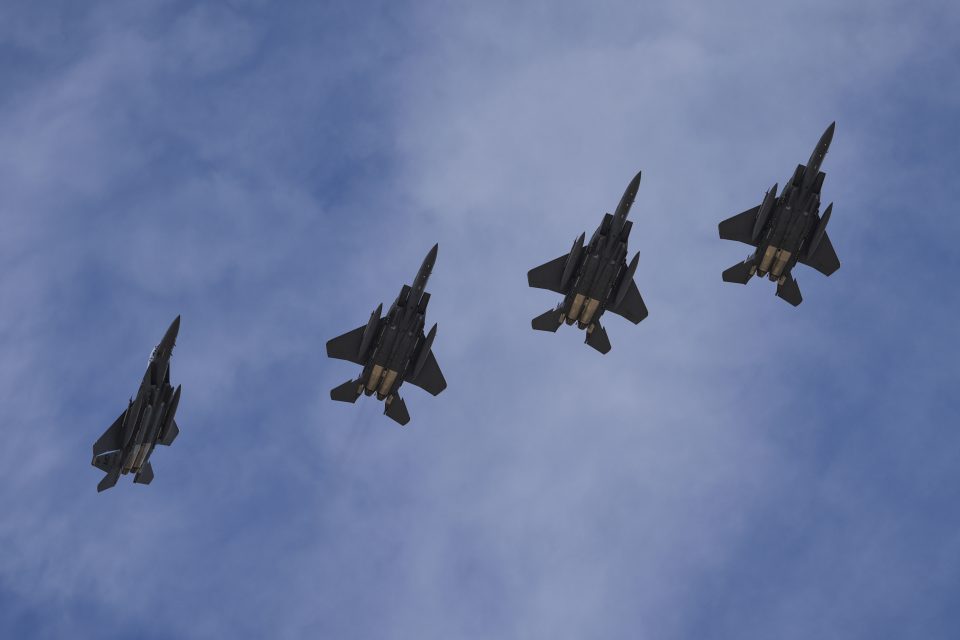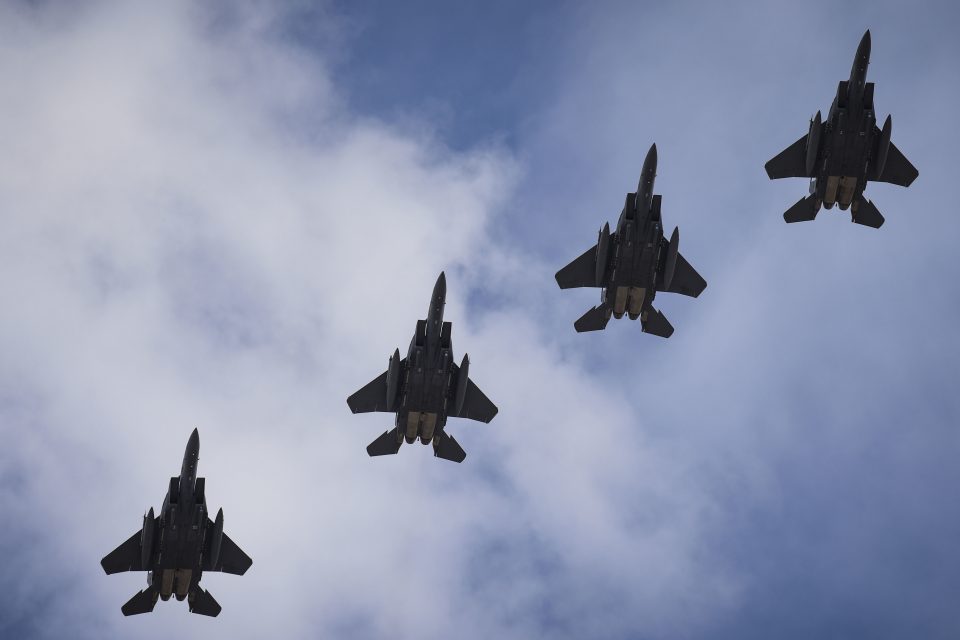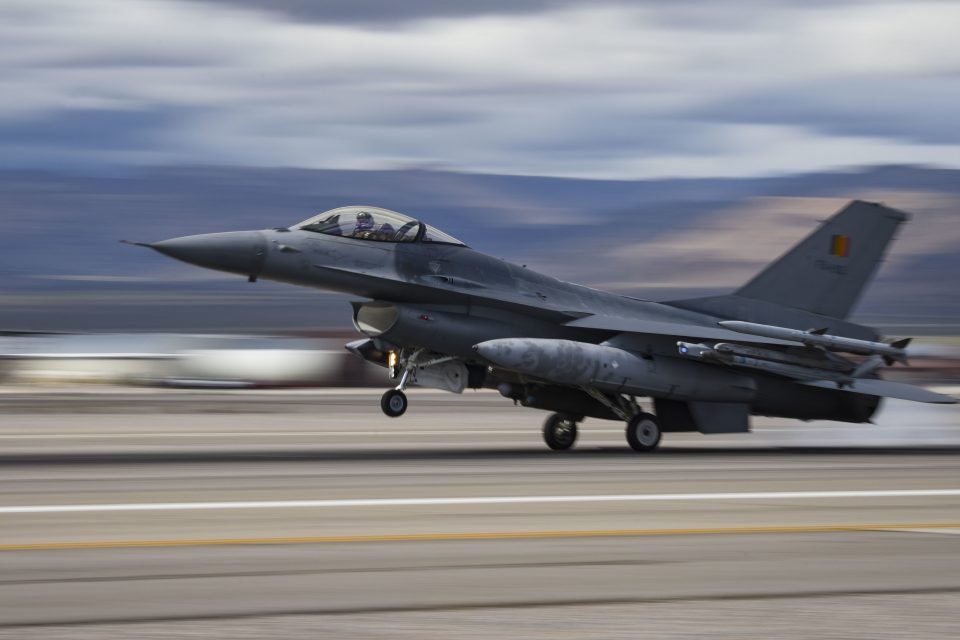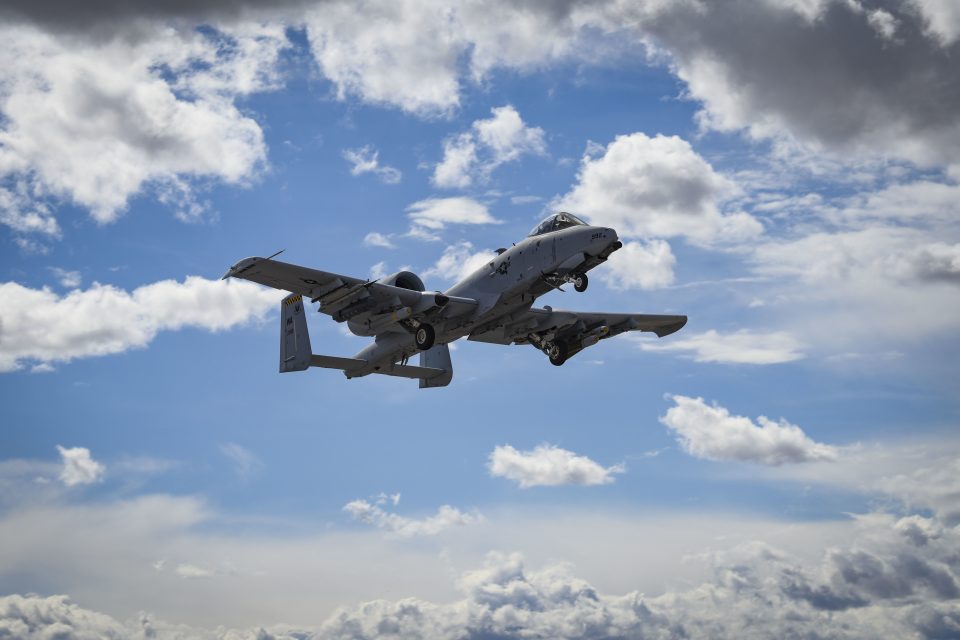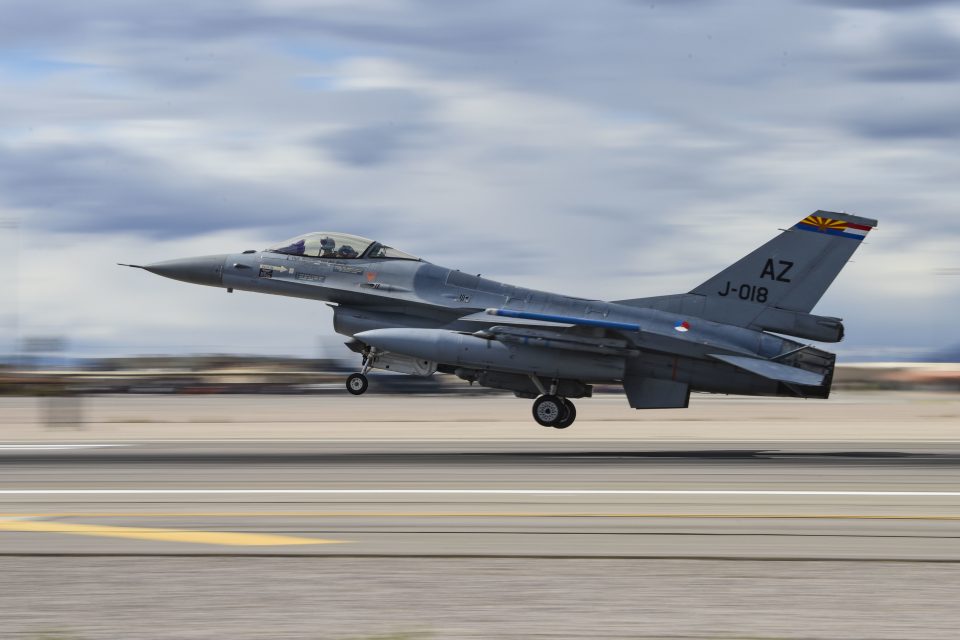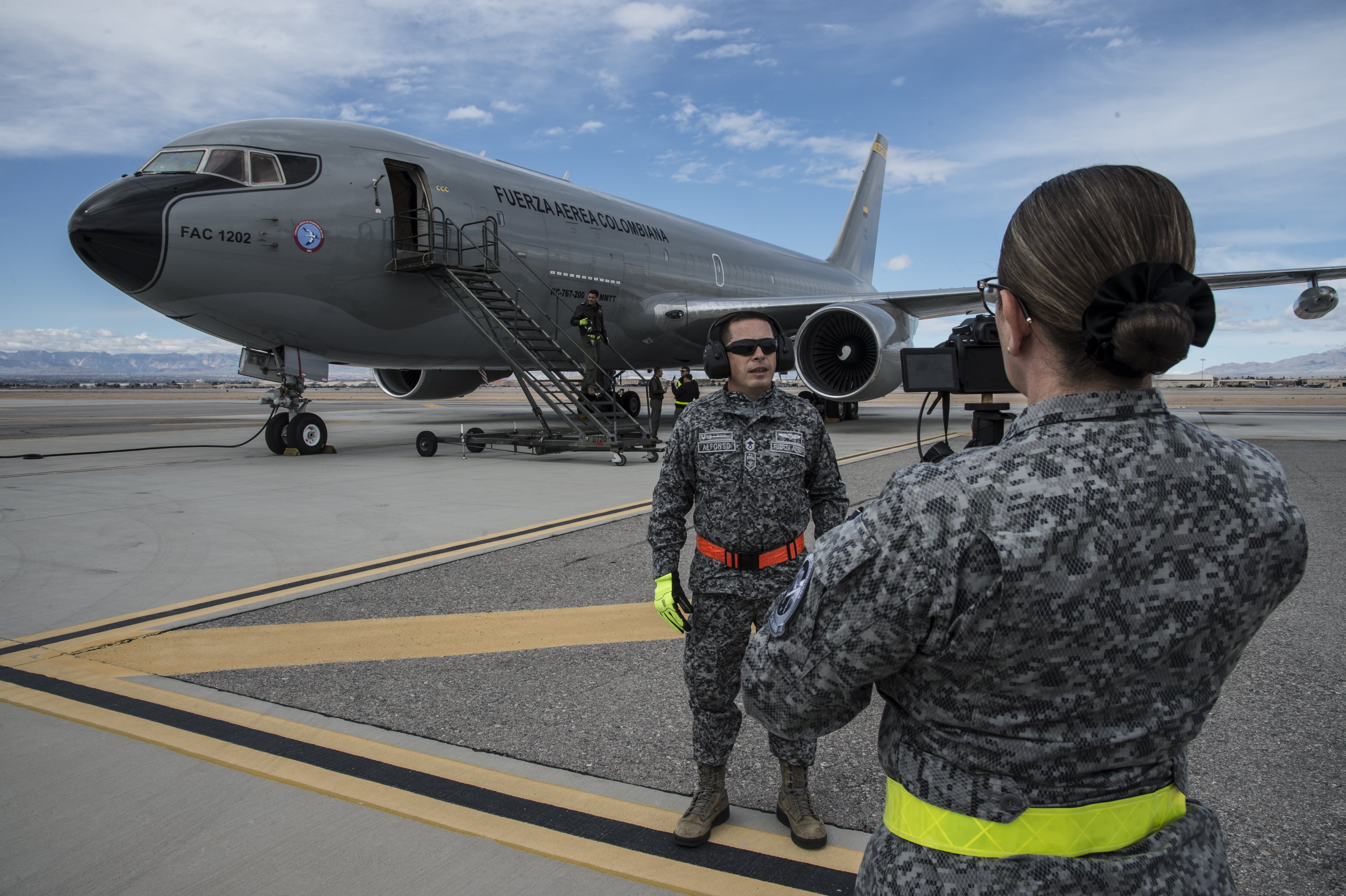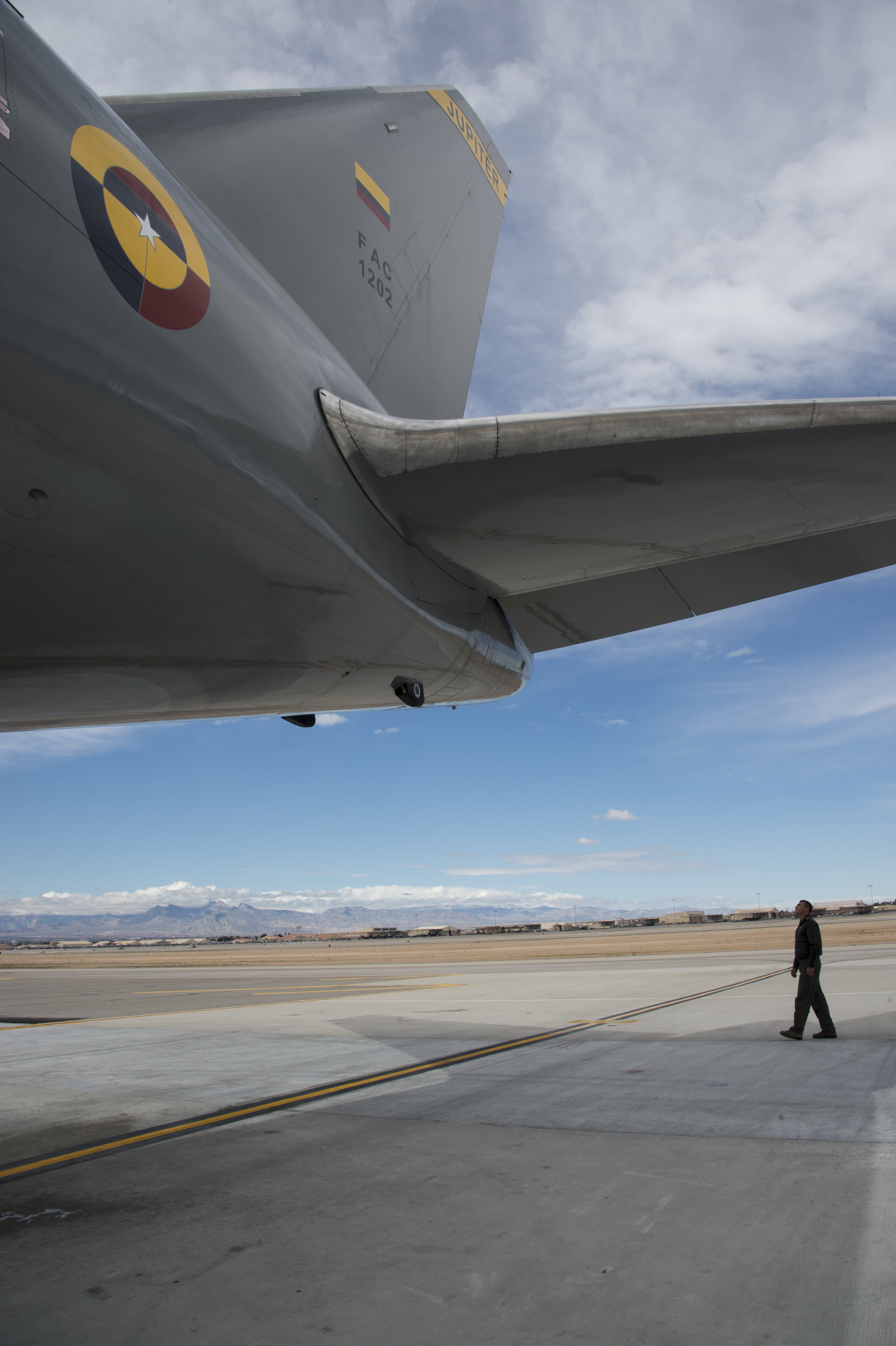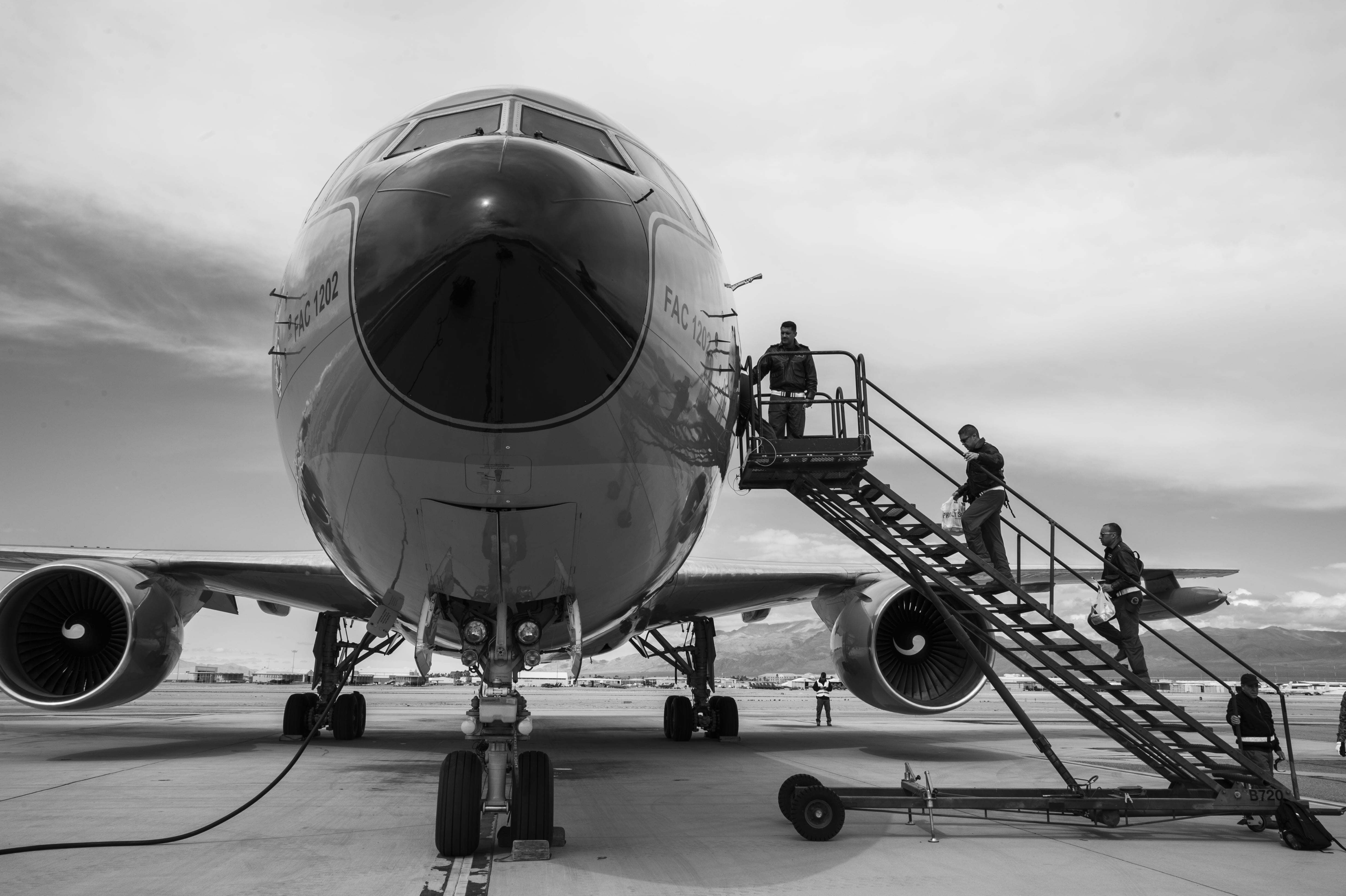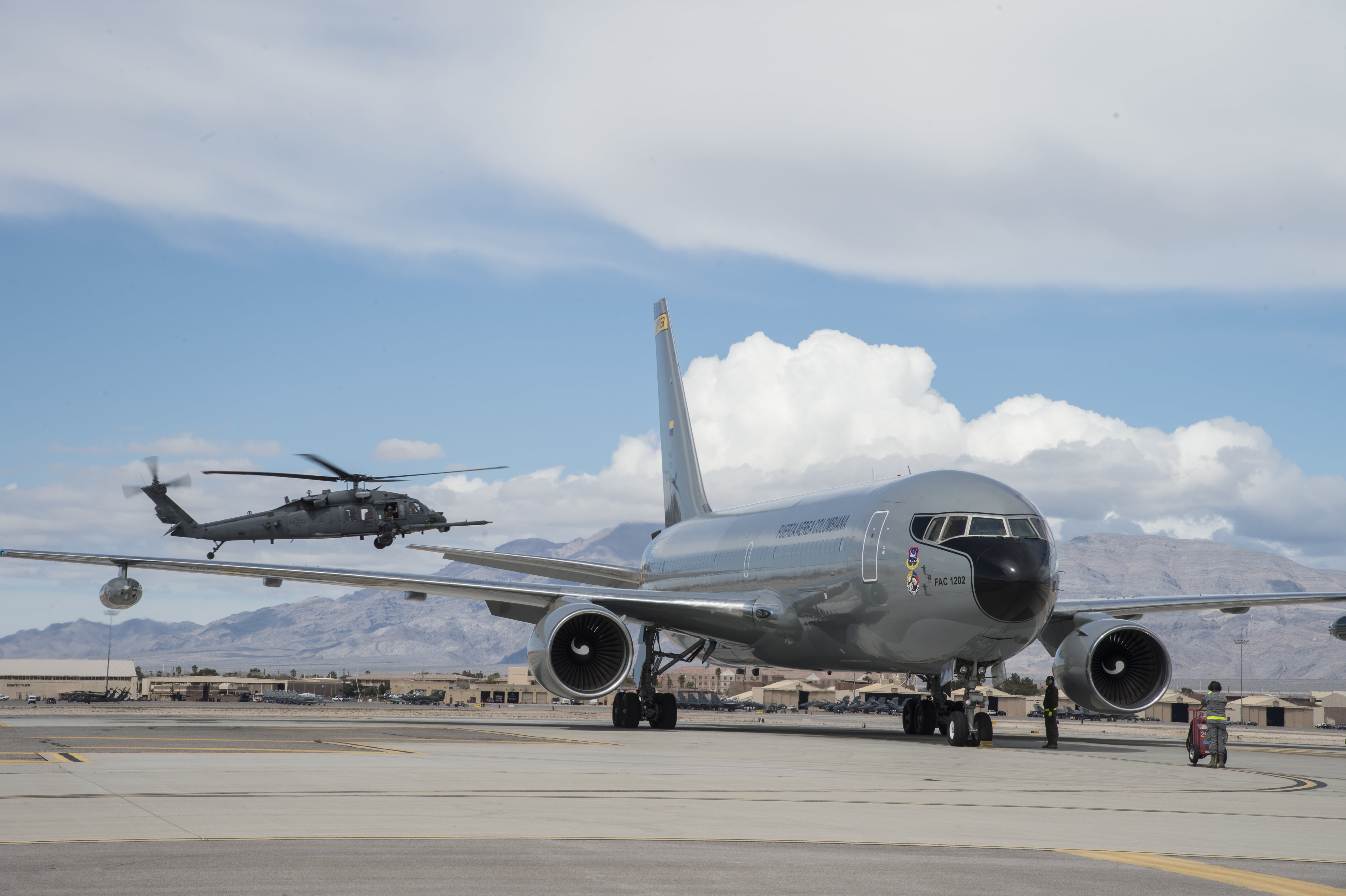Red Flag 19-1 was dominated by a fifth generation led force and was worked by the US, with the UK and Australia.
In Red Flag 19-2, the USAF was working with core allies in shaping additional coalition training experience.
Red Flag 19-2 from SldInfo.com on Vimeo.
The conclusion to Red Flag 19-1 was described this way in an article published on February 19, 2019:
The airforces of the US, UK and Australia have concluded the multinational advanced aerial combat training exercise Red Flag Nellis 19-1 at Nellis Air Force Base (AFB) in Nevada, US.
Exercise Red Flag aims to prepare the US and its allies to peer-level adversaries in any combat environment. More than 2,900 personnel assigned to 39 units participated in Red Flag 19-1 along with 95 aircraft.
For the three-week intensive exercise, the Royal Australian Air Force (RAAF) sent six F/A-18A Hornets, one E-7A Wedgetail aircraft, one AP-3C (electronic warfare) Orion aircraft, and up to 370 personnel.
The British Royal Air Force’s Intelligence, Surveillance, Targeting and Reconnaissance Force (ISTAR) deployed personnel, a Sentinel R1 from V(AC), an RC-135 Rivet Joint from 51 Squadron and Sentry AEW 1 (E-3D) from 8 Squadron.
The US Air Force’s (USAF) 79th Fighter Squadron served in an air superiority role.
During the exercise, the aircraft flew day and night missions, covering a range of conditions in the training scenarios.
“The missions were created to test our aircrew in realistic situations and challenge them in training scenarios that they don’t have access to back home.”
As part of the exercise, defence personnel established a Task Group Headquarters and a Control and Reporting Centre. Additionally, they provided support to the Combined Air Operations Centre and partnered cyber capability.
The Australian contingent received assistance from Medical, Security Forces and Number 1 Combat Communications Squadron in the form of vital support functions.
Task Group Headquarters commander group captain Hinton Tayloe said: “The training our personnel received while on Red Flag has been integral to developing their skills to operate in a hostile battlespace.
“The missions were created to test our aircrew in realistic situations and challenge them in training scenarios that they don’t have access to back home.
“It was also an important experience for our ground staff, who have had to move our personnel and aircraft to the other side of the world and maintain the aircraft in conditions we rarely see in Australia.”
Exercise Red Flag, which is overseen by the USAF 414th Combat Training Squadron, was established in 1975.
The next exercise, Red Flag-2, was described this way in an article published on March 22, 2019 in these terms:
The US Air Force (USAF) has commenced high-intensity air-to-air combat exercise Red Flag 19-2 at Nellis Air Force Base in Nevada, US.
Scheduled to be conducted until 22 March, the two-week exercise will be hosted north of Las Vegas within the Nevada Test and Training Range.
The multinational exercise will comprise forces and aircraft from several countries, including the US, Belgium, the Netherlands, Norway, Singapore, Saudi Arabia, and the UAE.
Approximately 80 aircraft are expected to take part in exercise Red Flag 19-2, including the Republic of Singapore Air Force’s (RSAF) F-15SG fighter aircraft, F-16 fighter aircraft from Belgium, the Netherlands, the UAE and the US, the Netherlands’ KDC-10 tanker aircraft, Norway’s F-35 fighter aircraft, Saudi Arabia’s F-15SA fighter aircraft.
Participating assets also include the US’ F-15E and EA-18G fighter aircraft, B-1 bomber, E-3 and E-8 surveillance aircraft, HC-130 airlift aircraft, KC-135 tanker aircraft and MQ-9 unmanned combat aerial vehicles.
“Participating nations will perform a series of realistic and challenging air-to-air and air-to-ground training missions, conducted in day and night environments.”
In addition to six F-15SGs, the RSAF is sending more than 100 personnel from its Peace Carvin V detachment in Mountain Home Air Force Base, Idaho, to participate in the event.
During the course of the exercise, participating nations will perform a series of realistic and challenging air-to-air and air-to-ground training missions, conducted in day and night environments.
In order to enhance the realism of the scenarios during exercise Red Flag 19-2, the USAF’s F-16s will play the role of an adversarial force.
Established in 1975, Red Flag is designed to create advanced and realistic combat-like situations to increase lethality and operator survivability in actual combat operations.
In the slide show below, the Colombian Air Force is seen supporting a refueling mission for Red Flag 19-2, their 767 MMTT
Jupiter is refueling U.S. Navy EA-18G Growlers from the Electronic Attack Squadron 134 (VAQ-134). (U.S. Air Force photo by Tech. Sgt. Angela Ruiz)


